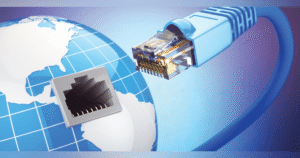Cell culture research has been foundational to the present knowledge about cellular biology, disease pathology, and gene-level events. Cells have been effective tools enabling in-depth research with less investment of time and money. Their use in drug discovery, development, and screening has accelerated the translation of treatments into clinical settings. For precise in vivo representation, in vitro culture is gradually experimenting with novel technologies, like three-dimensional models. Custom cells are one such approach that is turning in vitro research into more accurate models.
Cell Culture Research
In vitro research has played an instrumental role in the current scientific progress. It has provided a cost-effective and labor-intensive platform for research. Cells have become a suitable alternative for animal models, saving both time and money. The typical in vitro models are primary cells and cell lines. A definite life span and tissue-specific genotype characterize primary cells. Cell lines have an indefinite life span, making them much easier to culture, but they do not retain all the tissue-specific features. Cancer cells are included in their category due to their unlimited proliferation. However, they differ by retaining in vivo cancer cell-specific heterogeneity and genotype. On the other hand, cell lines are created in labs by genetic engineering. They might provide homogeneity but lack tissue-based heterogeneity. Each cell type, however, has its own applications in preclinical research.
Custom Cells
The increasing understanding of biological systems is revealing the differences in cells of the same tissue and the same cell type in different tissues. For example, epithelial cells in kidney nephrons assume different genetic expressions, phenotypes, and functions in distinct regions. Similarly, endothelial cells—once thought to be uniform throughout the body—have shown differences in their proteome and genome according to their tissue association. It’s interesting to note that these differences also affect how the cells react to damage, repair, and medication. It implies that each cell type is different and requires separate research to gain knowledge about the actual in vivo events.
Additionally, new animal models are developed by gene editing to recapitulate a pathological disease or disorder. Studies have shown differences in results based on gender, age, and animal models. Such observations have also been made on humans.
Custom Cell Isolation
The integration of variations at different levels paves the way for precision research. The list of cells to study might have expanded, but it also facilitates better representation of in vivo processes. Custom cell isolation, however, is difficult. High-throughput screening, careful characterization, standard procedures, and the use of suitable conditions and reagents are frequently necessary for the isolation process. It requires significant financial outlays in addition to being a time-consuming process. Not to mention the challenge of locating the source in case of human sample. Even after successfully isolating the cells, their yield and purity are often low. If the isolation or culture procedure is not optimal, it might lead to cellular distress, which can interfere with the subsequent findings. Fortunately, many companies provide easy access to these cells and customize them according to the research needs. They also avail commercial cell lines and cancer cells for research.
Applications
Diagnosis: With the advent of next-generation sequencing, genetic or epigenetic variations are surfacing. These changes are especially evident in normal vs diseased cells. Such alterations can form the basis of diagnostic tests in the future.
Drug Screening: Previously, hepatocytes were the optimal in vitro culture model to evaluate the toxicity of drugs. The recent findings revealed significant toxicity to other tissues for the drugs that were safe in hepatocytes. Therefore, different tissue-based models are now employed to assess the drug toxicity on a holistic level.
Drug Discovery: Research on custom cells can unearth the effector molecules essential for a pathological event. It can aid in the development of new therapeutics. Precision research also results in more effective drugs.
Advances in Custom Cell Isolation
Custom cell isolation and investigation are the basis of precision research. The isolation process is incomplete without the separation of different populations. It can use selective media or antibody-based separation (FACS or MACS) that utilizes cell-specific surface markers. The absence of a distinguishing marker has turned scientists toward their genetic profiling. Single-cell sequencing has made quite a progress by defining the genetic makeup of the cells rather than just their surface markers.
Conclusion
The demand for custom cells is growing in cell culture research. They integrate variations in tissues and donor profiles to fine-tune the research. These variations often result in differences in experimental data and the subsequent treatment. Therefore, their use can provide more reliable results. However, their acquisition becomes a problem as each cell requires a different protocol and thorough characterization. Private sector has emerged as a feasible option for providing customization services at reasonable costs to ease the whole process. Kosheeka is a cell culture company that provides these services in short turn-around time.
- Custom Cells in Research: Redefining Cell Culture
- Custom cell culture enhances research accuracy by replicating in vivo conditions, aiding diagnostics, drug discovery, and targeted disease studies.
- custom cell isolation, Cell culture research, commercial cell lines
Related posts:
 Best Topical Finasteride & Minoxidil Spray for Hair Regrowth
Best Topical Finasteride & Minoxidil Spray for Hair Regrowth
 What Are the Key Considerations Before Getting Filler Injections?
What Are the Key Considerations Before Getting Filler Injections?
 Dr. Kami Hoss Gives Out the Truth About Brushing & Flossing-Protecting Your Teeth
Dr. Kami Hoss Gives Out the Truth About Brushing & Flossing-Protecting Your Teeth
 Can Atrial Fibrillation Be Cured? Latest Research & Insights
Can Atrial Fibrillation Be Cured? Latest Research & Insights
 Prozenith: A Natural Weight Loss Supplement 70% OFF Discount
Prozenith: A Natural Weight Loss Supplement 70% OFF Discount
 Recovery and Aftercare Tips for Gynecomastia Patients in Dubai
Recovery and Aftercare Tips for Gynecomastia Patients in Dubai
 Top Reasons to Choose a Vitamin D3 Soft Gel for Everyday Health
Top Reasons to Choose a Vitamin D3 Soft Gel for Everyday Health
 Common Dental Emergencies and How Dentists Handle Them: Complete Guide
Common Dental Emergencies and How Dentists Handle Them: Complete Guide







